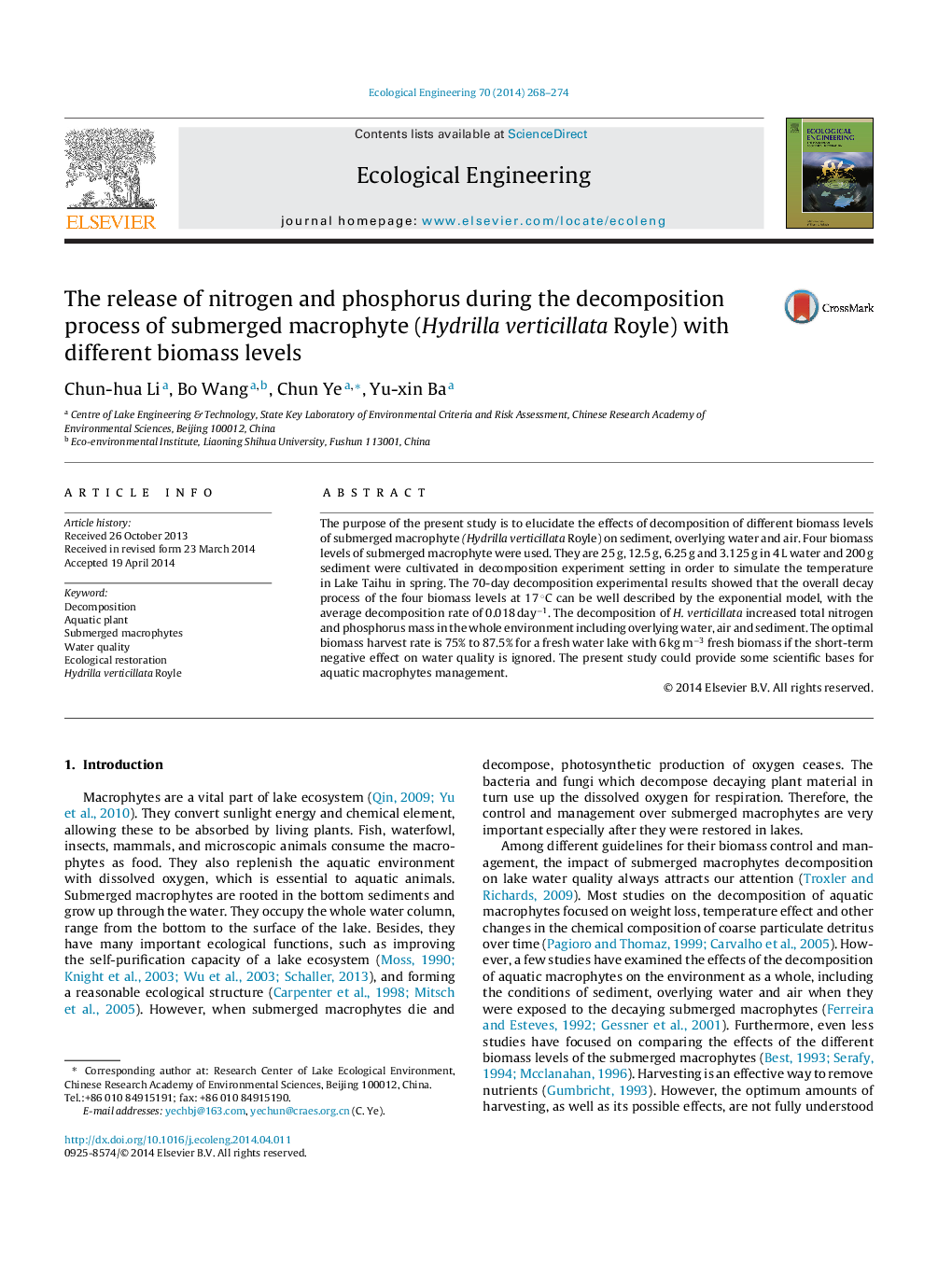| Article ID | Journal | Published Year | Pages | File Type |
|---|---|---|---|---|
| 6302162 | Ecological Engineering | 2014 | 7 Pages |
Abstract
The purpose of the present study is to elucidate the effects of decomposition of different biomass levels of submerged macrophyte (Hydrilla verticillata Royle) on sediment, overlying water and air. Four biomass levels of submerged macrophyte were used. They are 25 g, 12.5 g, 6.25 g and 3.125 g in 4 L water and 200 g sediment were cultivated in decomposition experiment setting in order to simulate the temperature in Lake Taihu in spring. The 70-day decomposition experimental results showed that the overall decay process of the four biomass levels at 17 °C can be well described by the exponential model, with the average decomposition rate of 0.018 dayâ1. The decomposition of H. verticillata increased total nitrogen and phosphorus mass in the whole environment including overlying water, air and sediment. The optimal biomass harvest rate is 75% to 87.5% for a fresh water lake with 6 kg mâ3 fresh biomass if the short-term negative effect on water quality is ignored. The present study could provide some scientific bases for aquatic macrophytes management.
Related Topics
Life Sciences
Agricultural and Biological Sciences
Ecology, Evolution, Behavior and Systematics
Authors
Chun-hua Li, Bo Wang, Chun Ye, Yu-xin Ba,
